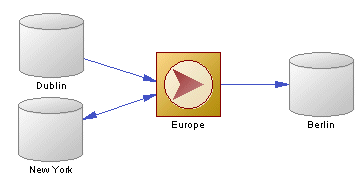To view or edit a data connection's properties, double-click its diagram symbol or Browser or list entry. The property sheet tabs and fields listed here are those available by default, before any customization of the interface by you or an administrator.
|
Property |
Description |
|---|---|
Name/Code/Comment |
Identify the object. The name should clearly convey the object's purpose to non-technical users, while the code, which is used for generating code or scripts, may be abbreviated, and should not normally include spaces. You can optionally add a comment to provide more detailed information about the object. By default the code is generated from the name by applying the naming conventions specified in the model options. To decouple name-code synchronization, click to release the = button to the right of the Code field. |
Stereotype |
Extends the semantics of the object. You can enter a stereotype directly in this field, or add stereotypes to the list by specifying them in an extension file. |
|
[Data store] |
Specifies the database, flat file, XML document or business process at the second extremity of the data connection. Use the tools to the right of the list to create, browse for, or view the properties of the currently selected object. |
Process |
Specifies the replication process or transformation process at one extremity of the data connection. Use the tool to the right of the list to view the properties of the selected object. |
|
Access type |
Specifies the kinds of data flow permitted along the connection. You can choose one of the following values:
In the following example, the Europe replication process can read data from the Dublin database, can read data from and write data to the New York database, and can write data to the Berlin database:
|
Keywords |
Provide a way of loosely grouping objects through tagging. To enter multiple keywords, separate them with commas. |
